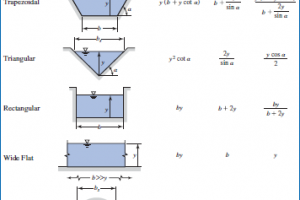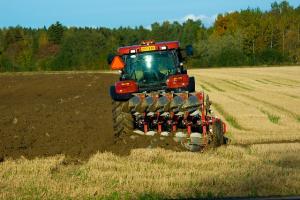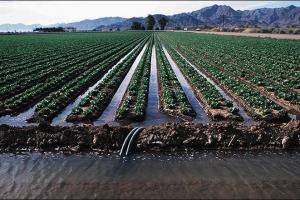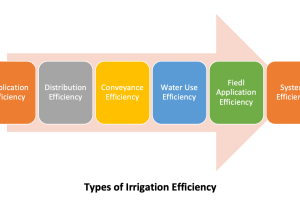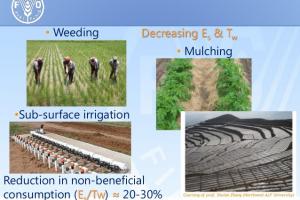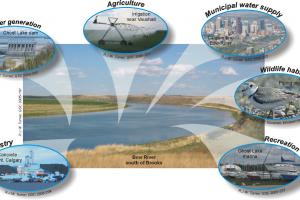Shapes, Types & Properties of Open Channels

Open channel can be said to be as the deep hollow surface having usually the top surface open to atmosphere. Open channel flow can be said to be as the flow of fluid (water) over the deep hollow surface (channel) with the cover of atmosphere on the top. Examples of open channels flow are river, streams, flumes, sewers, ditches and lakes etc. we can be said to be as open channel is a way for flow of fluid having pressure equal to the atmospheric pressure. While on the other hand flow under pressure is said to be as pipe flow e.g. flow of fluid through the sewer pipes.
Open-channel flow is usually categorized on the basis of steadiness. Flow is said to be steady when the velocity at any point of observation does not change with time; if it changes from time to time, flow is said to be unsteady. At every instant, if the velocity is the same at all points along the channel, flow is said to be uniform; if it is not the same, flow is said to be non-uniform. Non-uniform flow which is also steady is called as varied flow; non-uniform flow which is unsteady is called as variable flow. Flow occurs from a higher to a lower concentration by aid of gravity.

Shapes of open channels
Usually the man made and artificial open channels don't have rectangular cross section. The most common shapes of open channels are circular and trapezoidal.
Types of open channel
Open Channels are classified as:
- Rigid boundary open channels
- Loose boundary open channels
- Prismatic open channels
Rigid boundary open channels can be said to be as the open channels with the non-changeable boundaries. While on the other hand if open channel has the boundaries which changes due to scouring action or deposition of sediments, such channels are said to be as loose boundary open channels. The open channels in which shape, size of cross section and slope of the bed remain constant are said to be as the prismatic channels. Opposite o these channels are non-prismatic channels. Natural channels are the example of non-prismatic channels while man made open channels are the example of prismatic channels.
Properties of Open Channels:
In open channels flow usually occur due to the slope of channel bottom and the slope of liquid surface. The main difference in the open channel flow and pipe flow is that in pipe flow usually the cross section of channel is fixed and confined while on the other hand open channel flow is unconfined. Open channels flow is difficult to analyze than the pipe flow. That's why in open channel flow measurement empirical approach is adopted. The velocity of flow in open channel can be computed by help of Manning's formula:
V = 1/n x R0.66 x S0.5
In pipe flow the conduit (pipe for movement of fluid) usually completely fills with water for the development of pipe pressure, while in the conduit which is partially filled can have open channel flow. There is no restriction for the conduit in case of open channel flow to be completely filled.
Factors influencing the flow in open channels:
- Channel shape
- Fluid depth
- Fluid velocity
- Slope of channel
Flow measurement in open channel
The most common method which is used for the measurement of flow in open channel is to measure the height of the liquid as it passes over an obstruction (a flume or weir) in the open channel. This is usually done by constructing hydraulic structures like weirs, notches and flumes etc Manning approach can be used for flow measurement in open channels.





